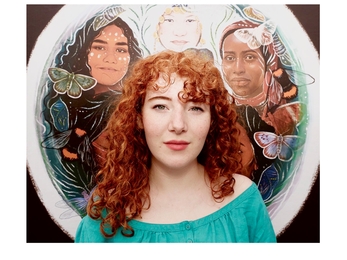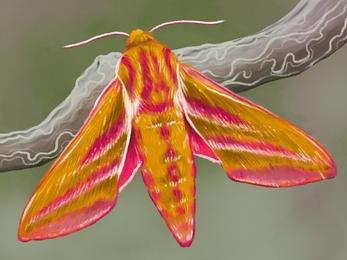These small creatures are actually very relevant. As Matt Collis puts it, “they are the lifeblood of the ecosystem”. Matt is an ecologist and naturalist, breaking down adult-learning barriers and connecting people with nature through workshops and wildlife tours led with enthusiasm. “When insects are declining,” Matt explains, “wildlife that eat insects are also declining.” Every species fits into a plant and animal community that has evolved to survive together. Even the competition between wildlife maintains the balance in nature and holds the stability of our ecosystem and global food security. It turns out that insects are silently collaborating on the survival of our species.
You might never want to invite someone with a pair of antennae into your home and that’s okay, they would probably rather be outside anyway. Here are two steps for advocating for insects, shared by Matt: “notice the species in your area, and then make the space welcoming.”
Noticing the species: Use a camera to get a photo, and get an identification book or search for the species online. In the UK, there are 27,000 species of insects, so be gentle to yourself about learning who is who. According to Matt, the process becomes easier when you learn the “big 5” families of insects in the UK: beetles, flies, ‘true bug’ insects, butterflies & moths, and allies such as bees, wasps, and ants.
Tip: When trying to match the insect to a species, consider the following:
- The insect’s habitat: where did you see them?
- The time of year, and the time of day.
- The recorded distribution of the species: are they official locals? It’s unlikely they’re on holiday.
Look out for young insects who can sometimes mimic other species for survival.
Make the space welcoming: once you have identified the species in your area, you can work on developing a safe space for them. For wildlife to thrive, they need access to food, water, shelter and a place to nest. Your area doesn’t need to tick all of these boxes, it’s likely that your space will become a valuable pitstop point for wildlife rather than their entire home.
You could use your windowsill to grow plants your small neighbours rely on. If you have the capacity to grow wildflowers in your area: consider when they blossom so that pollinators have access across the seasons. Leaving late blooming plants to grow, such as ivy throughout autumn, is a powerful way to be an ally.
Tip: Avoid supermarket-bought ‘bee hotels’ which often have been produced using harsh chemicals that hurt insects. Human-made bug homes require maintenance, so consider facilitating more natural habitats such as logs, compost heaps and broken upturned plant pots.
For those of us without gardens, there are many other ways that we can join in with insect conservation. Find out more here.
For me, Matt’s workshop - taught with patience and passion - was a powerful lesson on challenging my perceptions. In the moths & butterfly family in the UK, there are over 2,500 species. Only 59 of these species are butterflies. That leaves a lot of moths. Why, when only 3 out of 2,500 species of moths actually target clothes, do we see them as a hole-making nuisance?
Conservation, for a long time, has told narratives that we like to hear. We are proud of our beautiful butterflies, and devoted to our hardworking bees but we’ve disowned the rest of our insect family. It turns out that every small creature has a significant role in our survival. Recognising this truth is becoming more urgent as their numbers decline into extinction. Their loss is our loss. The narratives are changing. You can be part of this story of collaboration as we work with insects to protect our shared home.
Maybe it will become easier to hold a spider’s eye contact.



